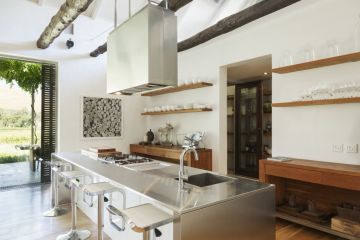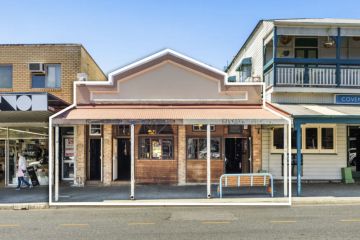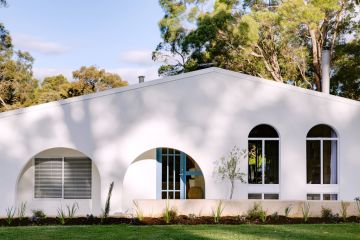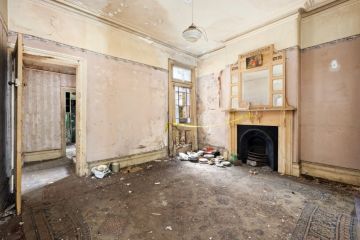The Queenslander home in Australia

Monsoonal rains, flooding and Australia’s northern summer heat have all influenced the design of the iconic Queenslander home.
Characteristics
Generally raised off the ground, built on stilts or stumps, the Queenslander architecture is designed to counteract extreme conditions like flooding, high temperatures and pest infestations. Solid timber frames combined with lightweight materials such as weatherboard cladding are common construction materials. At times, the foundations were built using sandstone or brick, but solid timber may also be used. The raised design works to cool the home by drawing cooler air up from beneath the house.
Large verandahs that encircle the home are a key design feature. They offer convenient outdoor living space and keep out the intense Queensland heat by providing the home with plenty of shade. As building and labour costs have risen, later styles saw the inclusion of smaller verandahs. Typically Queenslander roofs are made from corrugated iron, slate or tiles and have a steep, highly visible pitch (peak).
Common internal features include wooden floors, high ceilings, French doors and plenty of windows for cross ventilation.
The Queenslander is an enduring ‘model’, and over time other architectural styles have been combined with the Queenslander’s classic characteristics. You can find Queenslanders that exhibit other period styles such as Victorian, Edwardian and Art Deco.
These homes are perfect for warmer climates, but not for too far north, as they can become a cyclone hazard due to the lightweight construction and ventilation beneath the home.
Market value
According to Malcolm Gunning, President of the Real Estate Institute of New South Wales, buying a Queenslander is a labour of love. “If you are going to take on any timber property, it requires a lot of maintenance, particularly painted timber, and you need to budget for that maintenance,” he says.
Despite the extra work, Gunning points out that the Queenslander has many endearing, attractive qualities, such as natural ventilation that reduces cooling costs, and details such as ornate timber work, iron roofs and wide verandahs. “They also tend to be built on reasonably large blocks of land and are well suited to uneven land, as the home is raised,” he says.
Additionally, the raised timber construction offers flexibility. “You can easily raise a timber home and build underneath, unlike with brick,” says Gunning.
Renovation tips
The most common renovation is to build underneath by raising the upper level and leaving the original Queenslander features up top. In some areas, such as Brisbane, there are strict heritage restrictions guiding renovations to Queenslander homes.
Cameron Frazer from Ask An Architect, the building advisory service of the Australian Institute of Architects, agrees the biggest renovation opportunity is to infill beneath, as the homes are already raised and a big extension is not always economically viable. “The other common renovation is to refurbish internally, upgrade the kitchen and bathrooms, all that sort of thing. Some people infill the verandah to increase enclosed space – but that does detract from the style obviously,” he says.
Ongoing timber maintenance also needs to be considered. “We always tell our customers, particularly at building inspections, if they are buying a timber building then maintenance is really something you’ve got to keep on top of …otherwise damage to timber can get away from you and cause long-term damage to the home and loss of value as well,” says Frazer.
We recommend
We thought you might like
States
Capital Cities
Capital Cities - Rentals
Popular Areas
Allhomes
More
- © 2025, CoStar Group Inc.










